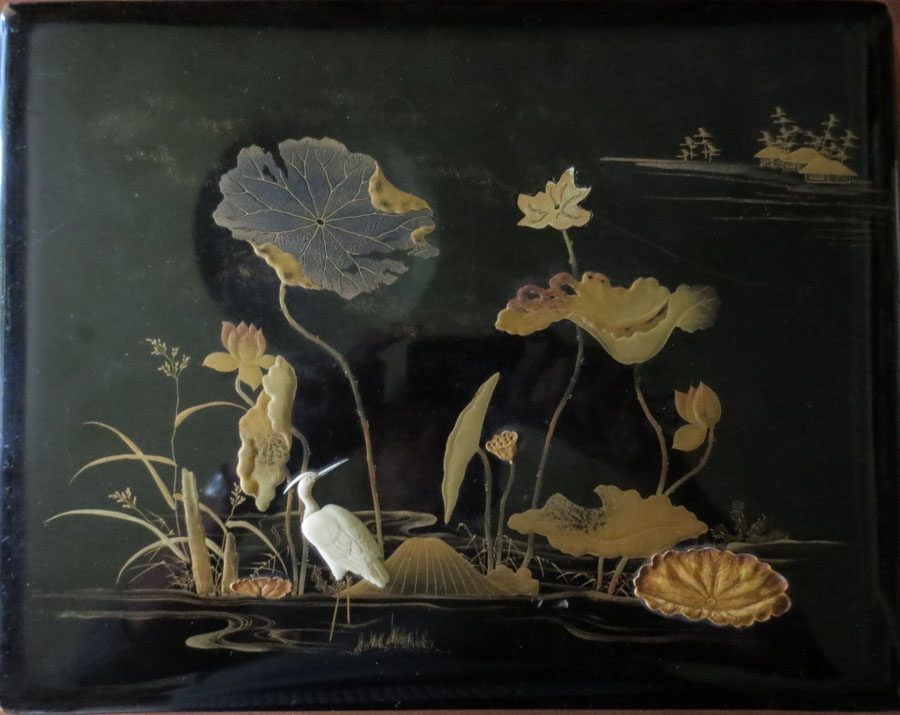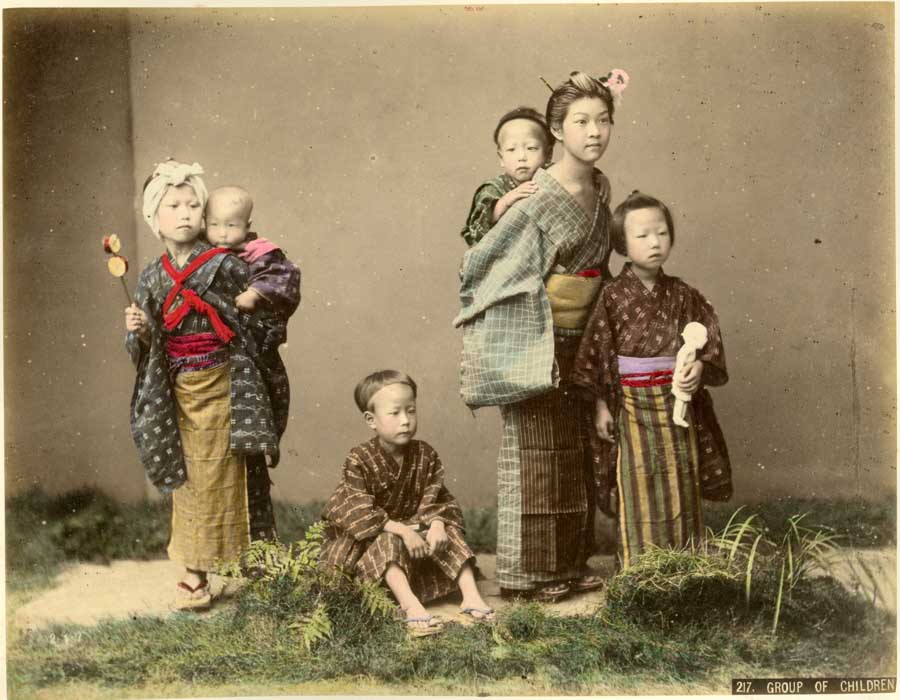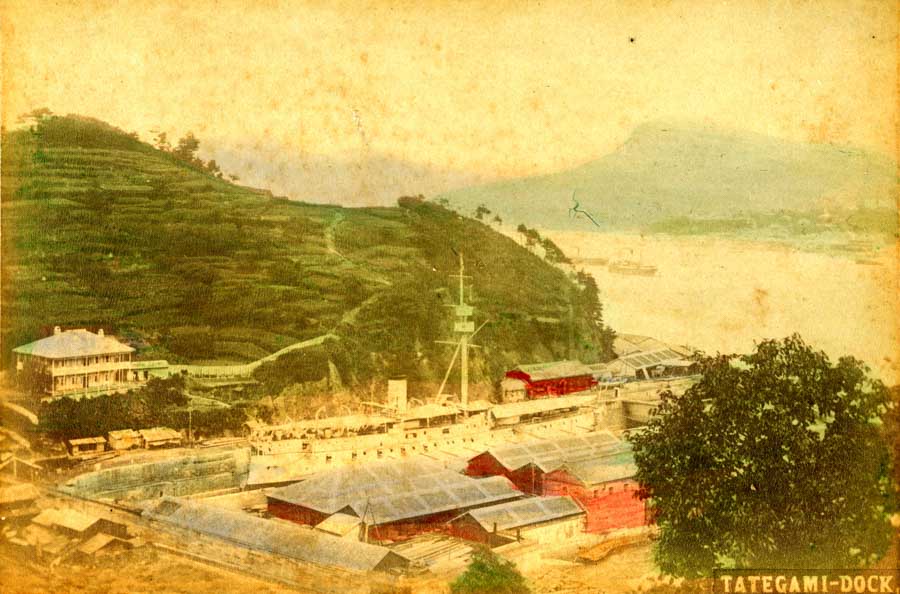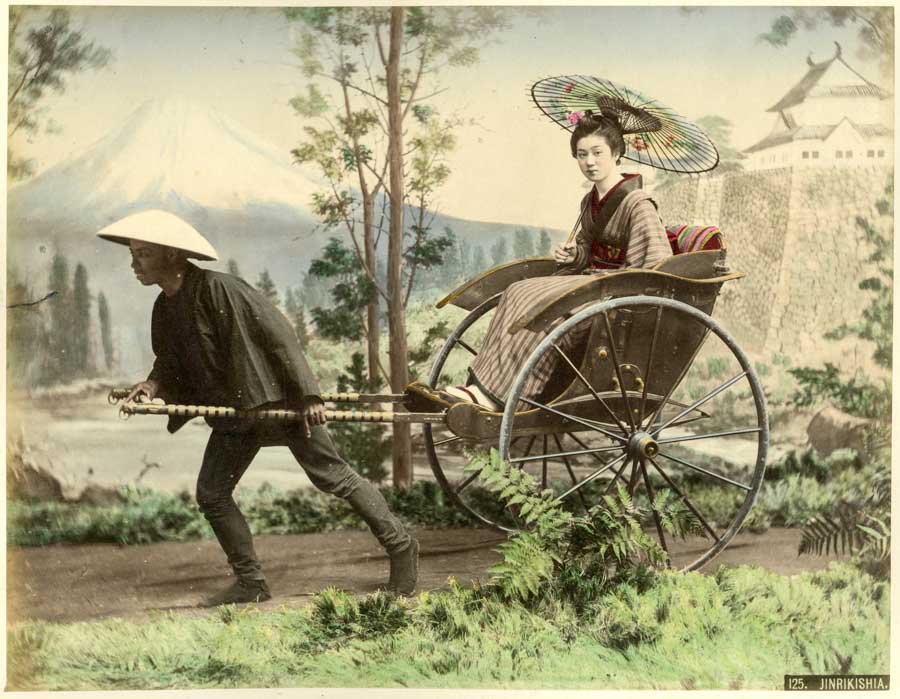One of my favourite albums of vintage photographs is a large lacquerware-covered book of hand-coloured images from Japan. The photographs are pasted down onto the thick pages and, between the photos themselves and the lovely album, the labour and effort involved in the creation of the album is very apparent.

Such albums, I have learned, were produced in a range of sizes and qualities, primarily for tourists visiting Japan. Bear in mind that Japan was a closed country as far as the industrial-capitalist West was concerned until the United States forced it to open its market to Western goods in 1853. Until then the only Japanese port open to foreigners was Nagasaki.
After the US intervention, photography arrived in Japan via the port of Yokohama. The father of Japanese photography was Italian-born Felice Beato, a remarkable adventurer who settled in Yokohama in the 1860s and founded a busy studio that employed many Japanese artists to colourise the albumen prints he took for the tourist trade.

Among Beato’s Japanese assistants was Kusakabe Kimbei. Kimbei worked for Beato for almost two decades before starting his own studio in Yokohama in 1881. He specialised in depicting traditional Japan, which was fast disappearing, and he used geisha as models in many of his carefully composed images.


The photographs in this album are masterpieces of the colourist’s art. The detail is fine and exquisite and clearly each piece must have been very time-consuming to complete.
Not all such albums of photographs are created equal. Some, obviously of a cheaper grade made for less discerning buyers, feature very crude hand-colouring, with mere splotches of colour dropped more-or-less accurately in place on the photographs. These albums seem often to be produced on poorer paper too, and they do not appear to age as well as the higher-end products.







